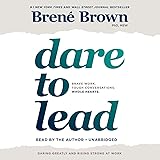The quest to preserve wealth and navigate economic uncertainties often leads investors to consider assets with a proven track record. As the video above strikingly illustrates, the performance of physical gold over the past quarter-century offers a compelling case for its enduring value. Witnessing a significant piece of solid gold surge from $8,900 USD to an impressive $104,000 USD in just 25 years highlights its remarkable role in wealth preservation.
This incredible growth isn’t just a random fluctuation; it speaks volumes about gold’s intrinsic properties and its reaction to global economic shifts. For individuals seeking to understand how to safeguard their financial future against inflation and market volatility, delving deeper into the mechanics behind gold’s appreciation is crucial. Let’s explore the underlying factors that have solidified gold’s position as a cornerstone asset for investors worldwide.
The Enduring Appeal of Gold: A Historical Perspective
For millennia, gold has captivated humanity, serving not only as adornment but as a universal symbol of wealth and power. Its intrinsic value, driven by scarcity and chemical properties that prevent corrosion, makes it a reliable store of value. Unlike paper currencies, which can be printed endlessly by governments, the supply of newly mined gold is finite and grows at a very slow rate, adding to its allure.
The video’s example perfectly encapsulates this enduring appeal, showcasing a staggering increase in the **value of gold** over the last two and a half decades. From roughly $8,900 for a kilogram in 1999 to $38,000 in 2014, and then soaring to $104,000 today, this represents an approximate 1069% increase from its 1999 price. Such a dramatic rise underscores gold’s historical role as a hedge against economic instability and currency devaluation.
Understanding Gold’s Price Drivers and Why It Gains Value
The journey of gold’s value is influenced by a complex interplay of economic, geopolitical, and market factors. When you observe the substantial gains illustrated in the video, it’s essential to understand what drives these shifts. Several key elements contribute to its performance, especially in turbulent times.
Inflation Hedge: Protecting Purchasing Power
One of gold’s most touted attributes is its ability to act as an inflation hedge. When the cost of living rises and currencies lose purchasing power, gold tends to maintain its real value. As central banks worldwide implement quantitative easing or keep interest rates low, the fear of inflation often pushes investors towards hard assets like precious metals.
The period covered in the video, from the late 1990s to the present, has seen various inflationary pressures and significant expansions of money supply. In such environments, smart investors turn to gold investment as a way to preserve their capital, realizing that a dollar today might buy less tomorrow. This protective quality makes gold a critical component in a diversified investment portfolio.
Safe Haven Asset: Stability in Uncertainty
During periods of economic uncertainty, political turmoil, or financial crises, gold often performs exceptionally well. It’s universally regarded as a “safe haven” asset because investors flock to it when traditional assets like stocks and bonds become volatile or risky. Major global events, from the dot-com bubble burst to the 2008 financial crisis and more recent geopolitical tensions, have consistently seen money flow into gold.
This flight to safety directly contributes to spikes in gold’s value, offering stability when other markets falter. The consistent demand for gold during these periods helps explain its significant appreciation over the long term. It’s a tangible asset that instills confidence when fiat currencies and equity markets appear vulnerable.
Supply and Demand Dynamics
Like any commodity, the price of gold is fundamentally shaped by supply and demand. The supply is relatively inelastic, as new discoveries are rare, and mining is a capital-intensive, slow process. Most of the gold ever mined is still in existence, held in vaults, used in jewelry, or for industrial applications.
Demand, however, can fluctuate based on global economic growth, central bank purchases, investor sentiment, and industrial use (e.g., in electronics and dentistry). India and China, for example, are major consumers of physical gold, with cultural and religious traditions driving consistent demand. These factors collectively contribute to the long-term upward trend in gold’s value.
Interest Rates and Currency Movements
The relationship between gold prices and interest rates is often inverse. When real interest rates (nominal interest rates minus inflation) are low or negative, holding non-yielding assets like gold becomes more attractive compared to interest-bearing instruments. This is because the opportunity cost of holding gold decreases.
Furthermore, the U.S. dollar’s strength significantly impacts gold prices, as gold is typically denominated in USD. A weaker dollar makes gold cheaper for investors holding other currencies, often leading to increased demand and higher prices. Conversely, a stronger dollar can put downward pressure on gold’s value. Observing currency fluctuations is crucial for understanding short to medium-term movements in gold.
Diversifying Your Portfolio with Gold: More Than Just a Commodity
For serious investors, gold is more than just a shiny metal; it’s a strategic asset for portfolio diversification. Its low correlation with other asset classes like stocks and bonds means that when one part of your portfolio struggles, gold can often provide a counterbalance. This helps reduce overall portfolio risk and volatility, leading to more stable long-term returns.
The impressive growth shown in the video highlights gold’s potential for capital appreciation, but its primary role in a balanced portfolio is often stability. Including gold investment can smooth out the bumps during market downturns, ensuring your wealth is protected even through challenging economic cycles. It’s a tangible asset that offers true financial peace of mind.
Ways to Invest in Gold Beyond Physical Bullion
While holding physical gold bullion, like the 1 kg bar in the video, is a direct way to own the asset, it’s not the only option. Investors can access gold through several avenues, each with its own advantages and considerations. Understanding these options can help you decide the best approach for your investment goals.
Gold Exchange-Traded Funds (ETFs)
Gold ETFs offer an accessible way to gain exposure to gold’s price movements without the need to store physical bullion. These funds hold physical gold on behalf of their investors, and their shares trade on stock exchanges. They provide liquidity and convenience, making them popular for many investors looking for exposure to gold’s value.
Gold Mining Stocks
Investing in stocks of companies that mine gold is another indirect method. These companies’ fortunes are tied to the price of gold, but also to their operational efficiency, management, and geopolitical risks specific to mining. While offering leverage to gold price increases, they also come with equity-specific risks not present in direct gold investment.
Gold Futures and Options
For more sophisticated investors, gold futures and options contracts allow speculation on future gold prices. These derivatives can offer significant leverage but also carry higher risks due to their complex nature and potential for rapid losses. They are generally suited for experienced traders rather than long-term investors focused on wealth preservation.
Ultimately, the choice of how to incorporate gold into your portfolio depends on your risk tolerance, investment horizon, and financial objectives. What remains clear, as demonstrated by the astounding increase in gold’s value shown in the video, is its undeniable significance as an asset class worthy of consideration for those focused on long-term wealth preservation and financial resilience.











